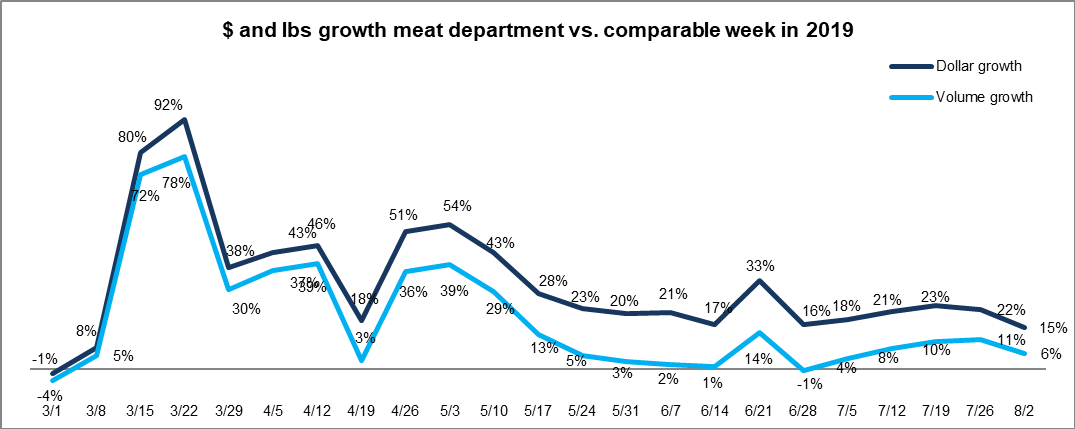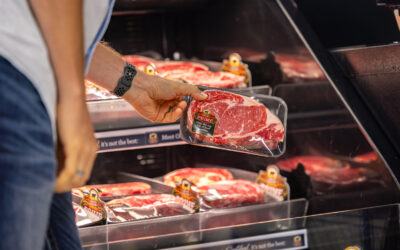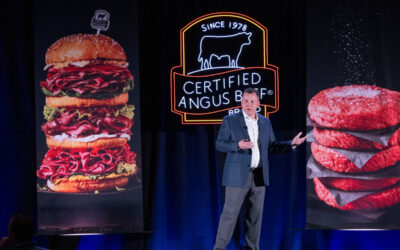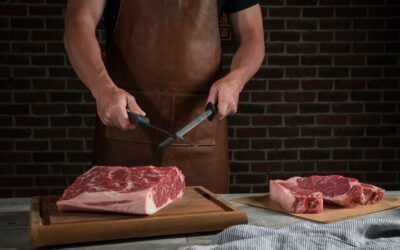
The Rollercoaster of Retail
CAB Connection
by David O’Diam, Vice President of Retail, Certified Angus Beef LLC
October 2020
 Just a few short months ago “pandemic” wasn’t a term I used much. That and a host of other words like pivot, new normal, social distancing, essential workers, etc., I’d be happy to never say or hear again for quite some time. However, “if you argue with reality you’re gonna lose,” and unfortunately, the new normal describe the past six months in the retail industry.
Just a few short months ago “pandemic” wasn’t a term I used much. That and a host of other words like pivot, new normal, social distancing, essential workers, etc., I’d be happy to never say or hear again for quite some time. However, “if you argue with reality you’re gonna lose,” and unfortunately, the new normal describe the past six months in the retail industry.
I work with Certified Angus Beef ® (CAB®) retail partners to help them best utilize the brand to increase sales and profitability. That way, they can leverage a higher quality eating experience than their competitors, offering great prices with a much better value proposition than commodity beef. Our recognizable logo in their meat case reassures at a glance the quality of product and great experience they can count on with each and every purchase.
Retail has always played a major role in CAB’s portfolio of sales, typically 40% to 45% of overall business. That’s been a huge factor in the brand’s longevity, as packers don’t want a middle-meat-only program and producers don’t want to rely on premium incentives based on a small percentage of the carcass. Retail represents a very balanced demand for the entire carcass and allows packers to evenly supply products across all segments.
Even though we’re in a year where overall CAB sales will be down, retail demand has kept us in a strong position rising to the occasion to comprise up to two-thirds of sales at times. It’s been the catalyst to keep a summer sales pace similar to last June to August—only down about 7% overall.
Historically, we’ve struck a nice balance between all segments (food service, international, value-added and retail), but this pandemic threw that balance out the window. As the first cases of COVID-19 hit, U.S. consumers began to hit the grocery stores to stock up (remember shortages of toilet paper?). Buying habits changed, with dollars moving away from entertainment toward groceries, and meat was a huge part of that additional spend.
The graph from 210 Analytics (see figure) shows the year-over-year growth in the meat department. Dollar sales are up 33.7% since March 15, with volume up by 20.7%. That translates into $8.1 billion more in meat department sales during the pandemic, $3.7 billion in beef alone, according to the meat trend monitoring firm. CAB licensees saw a huge spike in demand, our retail division growing 18.3% in May and June, compared to last year.

Today, retailers have more customers in their stores spending more dollars than ever, but that’s certainly come with its challenges. Going to the store isn’t exactly what it used to be: everyone is wearing a mask, Plexiglas partitions separate you from the cashiers, one-way aisles… the list goes on and it all adds cost and time. Retailers increased pay to their employees, too, who must work more hours to fill the demand.
Pandemic-related closures included some beef plants for a while. I don’t need to dwell on that, as many of you felt the ramifications of plant closures in cattle prices, but retailers felt it as well. They weren’t able to fully stock their shelves and limited quantities their customers could purchase. The packing plant bottleneck sent shockwaves through the beef industry, from folks at the beginning of the supply line all the way to the end—it was a trying time.
Retailers, just like ranchers, are resilient and have been able to answer the call in more ways than one. Flexibility became the name of the game, it wasn’t if you were going to be shorted on product, it was by how much. Our team worked hand-in-hand with retailers to help them locate product. One source was within our other divisions, food service warehouses were full of product they couldn’t sell as the majority of restaurants across the country closed. At the same time, retailers couldn’t find enough and were able to help one another out by purchasing product originally destined for steakhouses.
If you were to ask a retailer to reflect on this time period, I’m confident they would answer with, “I’d never want to do that again.” Countless hours were spent on the phones trying to locate product and make certain they had staff at the store who were able to cut it. It left retailers sleepless on nights that they even saw their beds. It truly has been a roller coaster ride, great demand, without the labor or supply to handle it.
For several months, many major retailers quit publishing their weekly circular ads. That might not seem like a notable occurrence, but we watch it closely as front page ad features drive a big share of sales. However, when those fliers started back up, our brand was a clear winner, as many front page ads featured buy-one-get-one offers and low prices that literally moved truckloads of beef at a time.

Today, we’ve started to see meat movement back to “normal” with some changes along the way. Online shopping has gone from something “only those darn kids do” (millennials on down) to something a strong percentage of the population is starting to try. That’s why we’ve bolstered our efforts in digital sales, with dedicated efforts toward helping our partners tell the story of quality when they can’t even see customers face to face. Our brand’s library of product photos help to show what any cut can look like once it’s prepared at home.
In advertising, we know people are spending less time driving, not listening to the radio on their way to work. So we’re sharing the messages of quality through online platforms, targeting customers who shop at brand partners as well as those who don’t, making sure they know where they can find a restaurant-quality steak: at a CAB retail store! Once customers get that beef home, they can view the videos where our chef team shows how to prepare a great recipe and grill that perfect steak. All of these elements work together to help retail partners—and ultimately our customers—have exceptional experiences with your great product.
As we move forward, the need for high-quality cattle that certify into your producer-owned brand is as important as ever. Retail is the first destination on the way to a quality meal and the center of the plate is where meal planning begins. Our retailers keep driving demand for the brand, and with the holidays approaching, that’s going nowhere but up. While this year will go down as one that many of us would like to forget, remember that “the new normal” at retail is one that requires more CAB brand product than ever before.
Originally published in the Angus Beef Bulletin.
You may also like
CAB Sets Sales Records, Sees Historically High Brand Acceptance Rates
In an otherwise tough time in the beef business, sales and supply records have been a bright spot. The positive numbers mean that quality beef production has not let up, and beef demand is holding. Consumers have proven the value proposition: the good stuff is worth a little more money, for a better eating experience.
Making Sense of Supply, Pricing and Navigating the Market
Amid anticipated shifts in cattle supply and evolving market dynamics, CAB remains well-positioned to navigate the beef sales road ahead. Clint Walenciak addressed how producer profitability, strategic specification adjustments, and resilient demand will help stabilize the brand’s beef supply chain through herd size and pricing shifts in 2025 and beyond.
Thriving with Shrinking Supply
Even as the nation’s cow herd contracts, “more pounds” and “higher quality” have been common themes. Specific to commercial cattlemen: It still pays to focus on carcass merit, in addition to other economically relevant traits.



